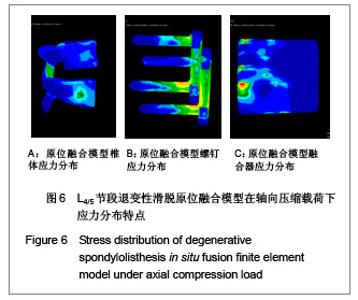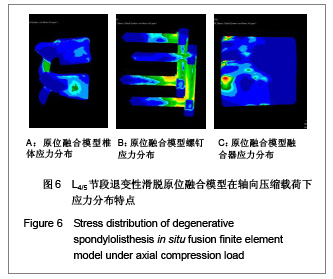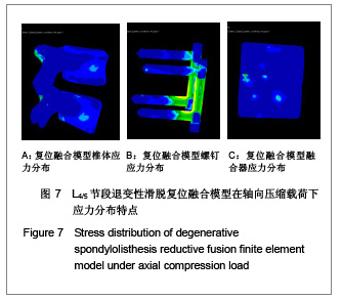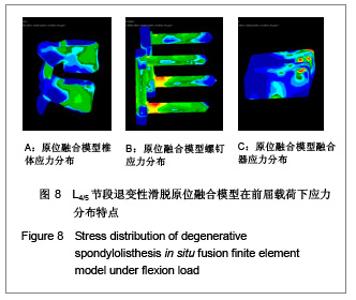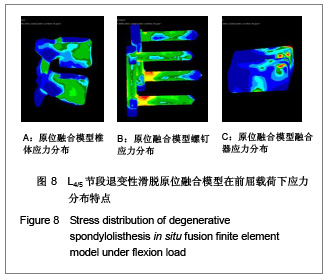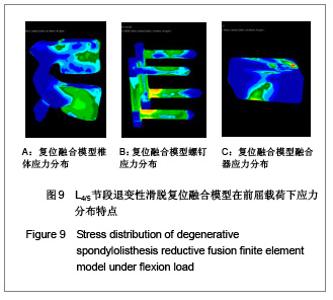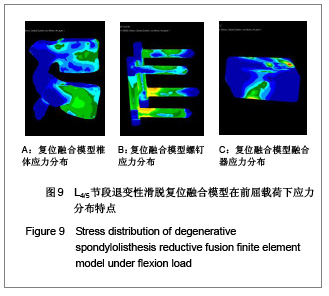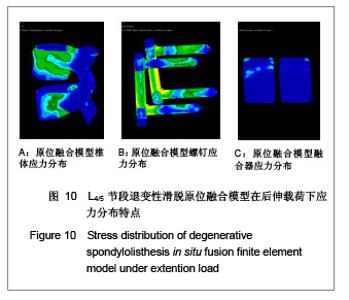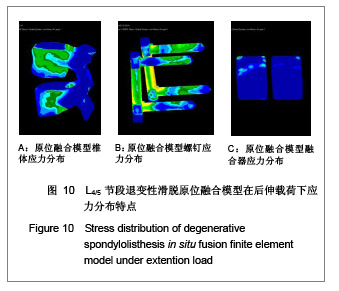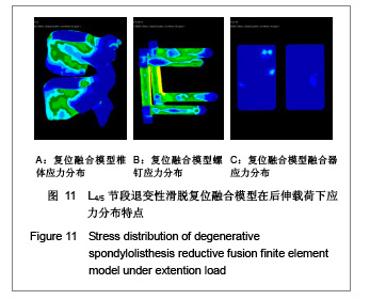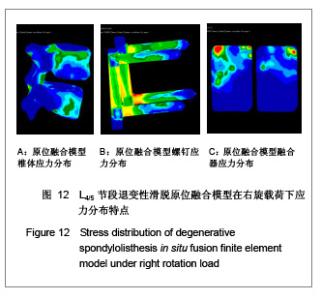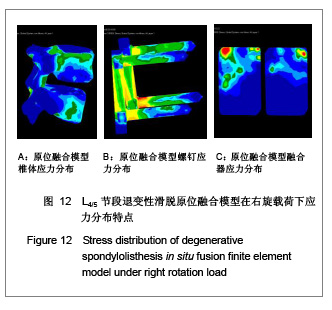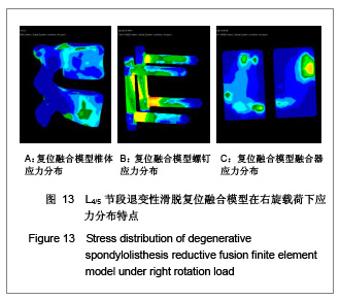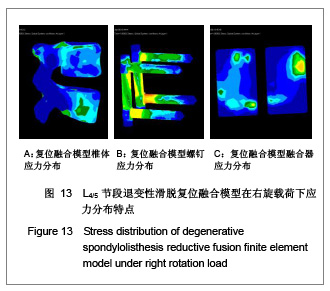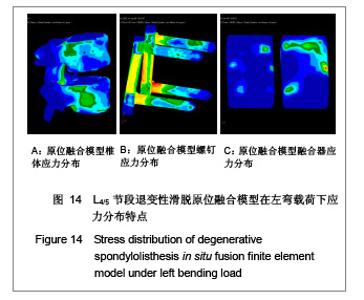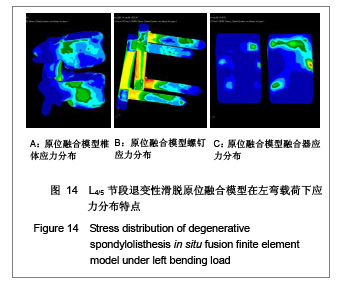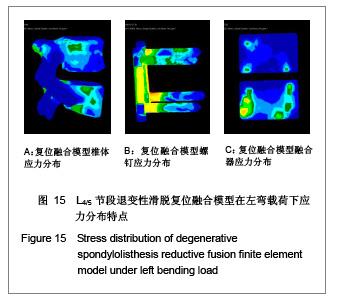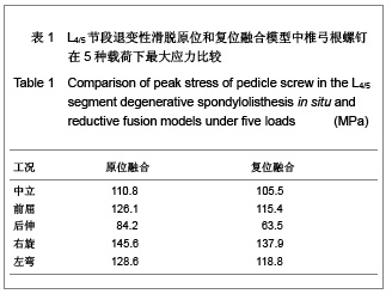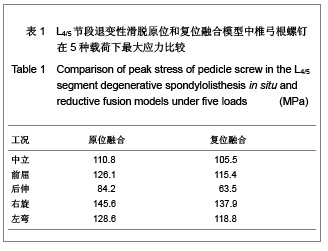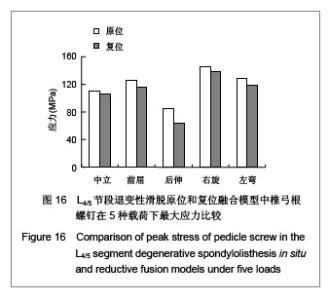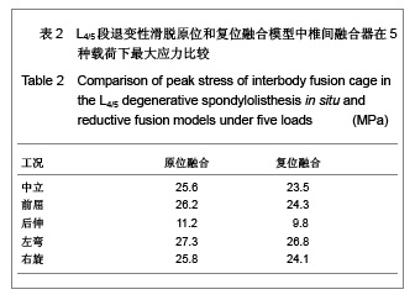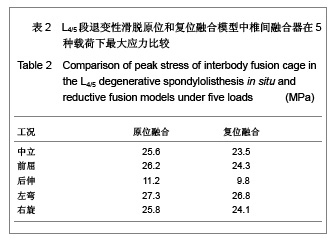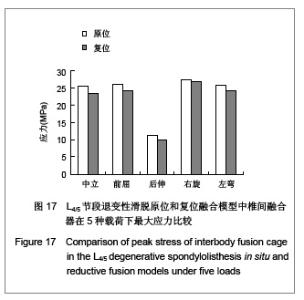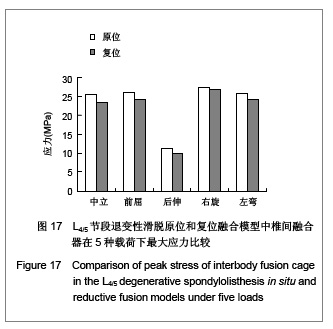| [1] Adams MA. Beijing:Peking University Medical Press,2005: 12-15. Adams MA. 赵凤东,范顺武,杨迪生译.腰痛的生物力学[M]. 北京:北京大学医学出版社, 2005:12-15.[2] Kim Y. Prediction of mechanical behaviors at interfaces between bone and two interbody cages of lumbar spine segments.Spine (Phila Pa 1976). 2001;26(13):1437-1442.[3] Guo LX, Teo EC, Lee KK,et al. Vibration characteristics of the human spine under axial cyclic loads: effect of frequency and damping. Spine (Phila Pa 1976).2005;30(6):631-637.[4] Guo LX, Teo EC. Influence prediction of injury and vibration on adjacent components of spine using finite element methods. J Spinal Disord Tech.2006;19(2):118-124.[5] Chosa E, Goto K, Totoribe K,et al. Analysis of the effect of lumbar spine fusion on the superior adjacent intervertebral disk in the presence of disk degeneration, using the three-dimensional finite element method. J Spinal Disord Tech. 2004;17(2):134-139.[6] Chen CS, Feng CK, Cheng CK,et al. Biomechanical analysis of the disc adjacent to posterolateral fusion with laminectomy in lumbar spine. J Spinal Disord Tech. 2005;18(1):58-65.[7] Lee KK, Teo EC. Poroelastic analysis of lumbar spinal stability in combined compression and anterior shear. J Spinal Disord Tech. 2004;17(5):429-438.[8] O'Brien JP, Mehdian H, Jaffray D. Reduction of severe lumbosacral spondylolisthesis. A report of 22 cases with a ten-year follow-up period. Clin Orthop Relat Res. 1994;(300): 64-69.[9] de Loubresse CG, Bon T, Deburge A,et al. Posterolateral fusion for radicular pain in isthmic spondylolisthesis. Clin Orthop Relat Res. 1996;(323):194-201.[10] Muschik M, Zippel H, Perka C. Surgical management of severe spondylolisthesis in children and adolescents. Anterior fusion in situ versus anterior spondylodesis with posterior transpedicular instrumentation and reduction. Spine (Phila Pa 1976). 1997;22(17):2036-2042.[11] Matthiass HH, Heine J.The surgical reduction of spondylolisthesis. Clin Orthop Relat Res. 1986;(203):34-44.[12] Dick WT, Schnebel B. Severe spondylolisthesis. Reduction and internal fixation. Clin Orthop Relat Res. 1988;(232): 70-79.[13] Hou SX. Zhongguo Jizhu Jisui Zazhi. 1999;9(4): 259. 侯树勋.正确掌握腰椎滑脱的治疗原则[J].中国脊柱脊髓杂志, 1999,9(4): 259.[14] Steffen T, Tsantrizos A, Fruth I,et al. Cages: designs and concepts. Eur Spine J. 2000;9 Suppl 1:S89-94.[15] Boos N, Webb JK. Pedicle screw fixation in spinal disorders: a European view. Eur Spine J. 1997;6(1):2-18. |
